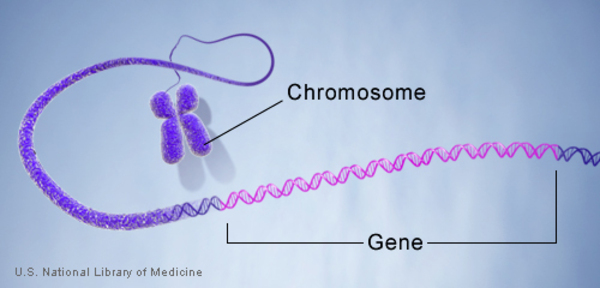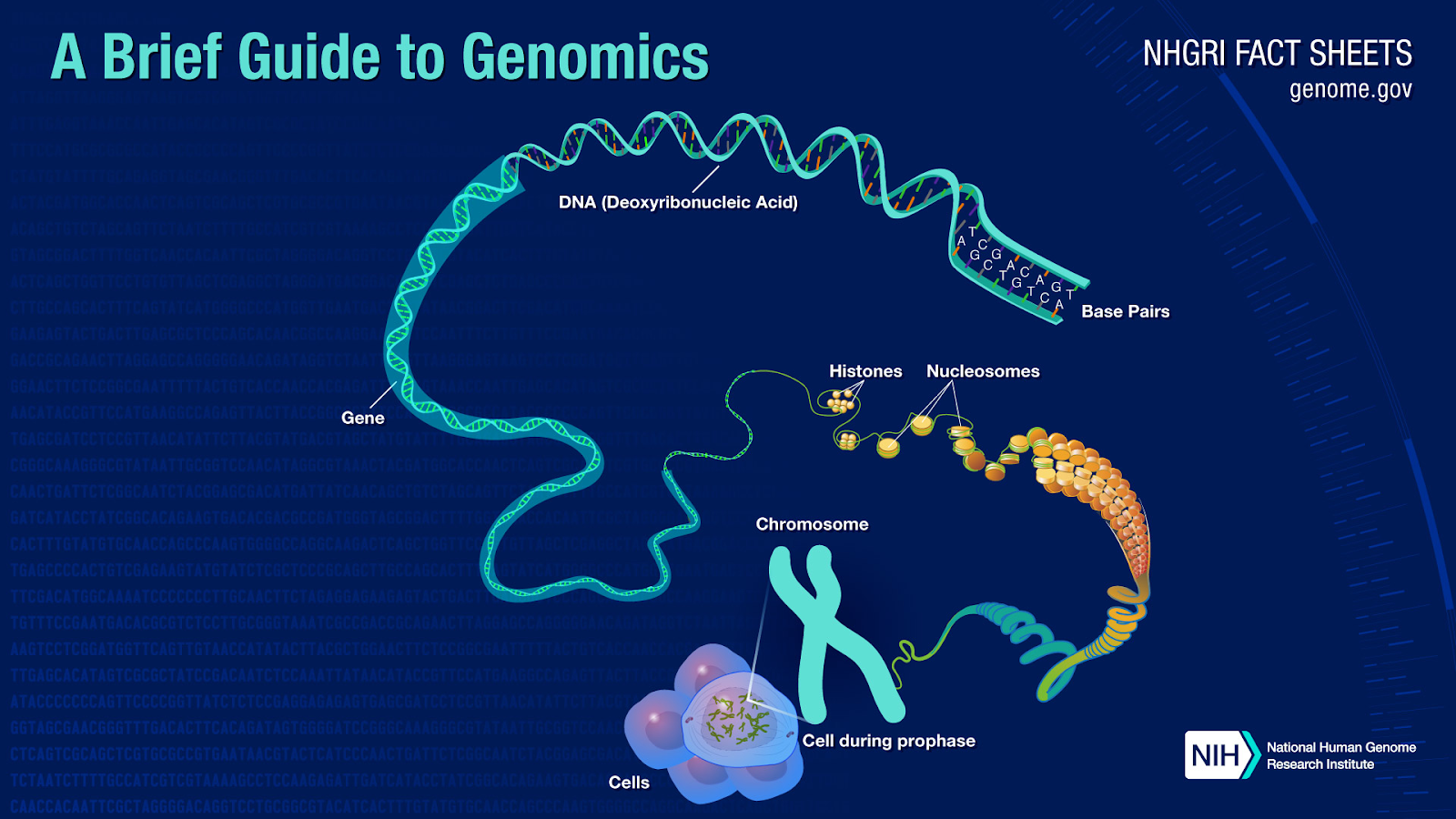Genome sequencing lab
Why in News:
- The facility for genome sequencing to identify new variants of SARS-CoV-2 has been started at Sawai Man Singh Government Medical College, making Rajasthan the first State in the country to have such a provision for complete sequencing at the State level.
What is a gene?

- A gene is the basic physical and functional unit of heredity. Genes are made up of DNA. Some genes act as instructions to make molecules called proteins. However, many genes do not code for proteins. In humans, genes vary in size from a few hundred DNA bases to more than 2 million bases.
- The gene is the basic physical unit of inheritance. Genes are passed from parents to offspring and contain the information needed to specify traits. Genes are arranged, one after another, on structures called chromosomes. A chromosome contains a single, long DNA molecule, only a portion of which corresponds to a single gene. Humans have approximately 20,500 genes arranged on their chromosomes.
- Every person has two copies of each gene, one inherited from each parent. Most genes are the same in all people, but a small number of genes (less than 1 percent of the total) are slightly different between people.
What is a genome?

- A genome is the complete set of genetic information in an organism. It provides all of the information the organism requires to function. In living organisms, the genome is stored in long molecules of DNA called chromosomes.
- The genome includes both the genes and the noncoding DNA, as well as mitochondrial DNA and chloroplast DNA. The study of the genome is called genomics.
What is genome sequencing?
- Genome sequencing is the process of determining the entirety, or nearly the entirety, of the DNA sequence of an organism’s genome at a single time.
- Genomic information has been instrumental in identifying inherited disorders, characterizing the mutations that drive cancer progression, and tracking disease outbreaks.
- Rapidly dropping sequencing costs and the ability to produce large volumes of data with today’s sequencers make whole-genome sequencing a powerful tool for genomics research.
Related information
Human Genome Project
- The Human Genome Project (HGP) was the international, collaborative research program whose goal was the complete mapping and understanding of all the genes of human beings. All our genes together are known as our “genome.”
- The HGP has revealed that there are probably about 20,500 human genes. This ultimate product of the HGP has given the world a resource of detailed information about the structure, organization and function of the complete set of human genes.
- This information can be thought of as the basic set of inheritable instructions for the development and function of a human being.
Genome India Project (GIP)
- The Ministry of Science and Technology has approved an ambitious gene-mapping project called the Genome India Project (GIP). The project has been described by the researchers as the “first scratching of the surface of the vast genetic diversity of India”.
What is GIP?
- The Genome India Project, is a collaboration of 20 institutions that includes the Indian Institute of Science and some IITs, which will allow for new efficiency in health, agriculture, and life sciences.
- Its goal is to create a grid of the Indian reference genome in order to completely comprehend the types and nature of diseases and features that affect India’s diverse population.
- After gathering 10,000 samples from throughout India in the first phase, the massive project seeks to create a grid to arrive at a representative Indian genome.
Significance of GIP
- The Human Genome Project (HGP 1990-2003), an international initiative that resulted in the decoding of the entire human genome, was the inspiration for the Genome India Project.
- The majority of genomes mapped under HGP (almost 95 percent) came from urban middle-class white people, posing a significant diversity issue. As a result, HGP should not be considered a true representation of the human genome.
- Because of the size and diversity of the Indian population, the GIP intends to substantially add to the current information on the human species and advance the cause in this context. The following are some examples of diversity:
- Horizontal Diversity: Massive migrations have occurred on the Indian subcontinent, with the first arriving from Africa. There have also been recurrent migrations by numerous populations from all over the world, making this a unique occurrence of genetic intermingling of nearly all races and types.
- Vertical Diversity: Different groups have practised endogamy or inter-marriage, resulting in some diseases being passed down only to certain groups and other features being acquired by only certain groups.
- Studying and comprehending both differences would give the foundation for individualised treatment for a vast number of people in the world.
Benefits of GIP
- Precision Healthcare: GIP will aid in the development of personalised medicine by anticipating diseases and adjusting treatment based on a patient’s genome. Cardiovascular illness, for example, causes heart attacks among South Asians but strokes in most African countries. If disease propensities can be linked to genetic variants, it is hoped that public health initiatives can be better targeted and diseases can be predicted before they manifest.
- International Collaboration: A mapping project in one of the world’s most diverse gene pools would likewise assist global science. Because of its scale and the diversity it would bring to genetic studies, the project is claimed to be one of the most significant of its sort in the world.
- Sustainable Agriculture: A better understanding of the genetic basis of plant sensitivity to pests, insects, and other factors that impede productivity will have similar benefits in agriculture. This can help to lessen reliance on chemicals.
Challenges
- Fear of Scientific Racism: Civilisations have been fascinated with the topic of heredity and racial purity, and greater scientific studies of genes and classifications could reinforce prejudices and allow politics and history to take on a racial twist.
Before the US Civil War, the physician Samuel Morton’s work on brain volume measurements (dubbed “the father of scientific racism” in America) was used to justify slavery. Scientific work on mapping genetic groups in India, a country riven by identity politics, may exacerbate societal differences based on the prevailing notion of race.
- Data & Storage: After the sample has been collected, the anonymity of the data, as well as questions about its possible use and misuse, must be addressed. India is yet to adopt a Data Privacy Bill with proper safeguards, and launching the GIP before this issue is resolved could result in a new set of issues.
- Medical Ethics: In a project whose sole goal is to develop a database of genetic information, there is a possibility that doctors will execute gene editing on patients secretly. Selective breeding, often known as Eugenics, has long been contentious, as a Shenzhen-based scientist was recently sentenced to three years in prison for creating the world’s first gene-edited infants.
Additional Information
Hargobind Khorana (Indian-born American biochemist)
- The Nobel Prize in Physiology or Medicine 1968 was awarded jointly to Robert W. Holley, Har Gobind Khorana and Marshall W. Nirenberg for their interpretation of the genetic code and its function in protein synthesis.

[…] To read about uses of genome sequencing and Genome India Project- https://officerspulse.com/genome-sequencing-lab/ […]